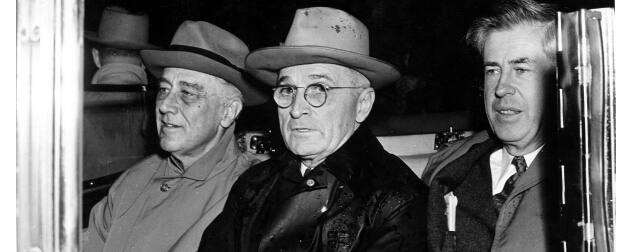
Franklin D. Roosevelt, Harry S. Truman and Henry Wallace, Nov. 10, 1944. Photo by Abbie Rowe, courtesy the Truman Library.
Financial markets were open for business as usual on April 13, 1945, as the Friday morning headlines somberly reported President Franklin D. Roosevelt’s death the previous afternoon.
In fact, after some initial hesitation, stock prices closed generally higher that day. This display of confidence came despite the fact that America was in the midst of a global war; that it had not had anyone else as president in more than 12 years; that things did not work out too well either for the markets or for Roosevelt’s predecessor, Herbert Hoover, in the years before Roosevelt’s presidency; and that Roosevelt’s vice president was a lightly regarded Midwestern politician who was, as the United Press news wire pointed out, a “one time $3-a-week ‘bottle duster’ in a small-town Missouri drug store.”
Harry Truman may have been untested when he was sworn in as president three hours after Roosevelt died (after the New York financial markets had closed for the day on April 12), but the system that placed him in the Oval Office was not. Six presidents had died in office before Roosevelt, the most recent having been Warren Harding just 22 years earlier. Truman’s first official act was one of continuity: affirming that the San Francisco World Security Conference (which produced the United Nations Charter) would begin as planned less than two weeks later.
The system – refined by the 25th Amendment, ratified in 1967 – has continued to work in the decades following Roosevelt’s death. Lyndon B. Johnson took the oath of office aboard the aircraft that carried John F. Kennedy’s body back to the nation’s capital. Gerald Ford succeeded Spiro Agnew as vice president when Agnew pleaded no contest to income tax evasion charges and resigned; Ford then succeeded Richard Nixon, after Nixon, too, resigned amid pending Watergate-related impeachment proceedings.
John Hinckley Jr.’s 1981 attempt on Ronald Reagan’s life caused a momentary flutter. Reagan’s secretary of state, Gen. Alexander Haig, declared himself “in control” while the president was in surgery. Actually, he wasn’t, but the only person who seemed confused on that point was Haig.
We have one president at a time in this country. That person acts with the full authority of the office from the moment he (or, in the future, she) is sworn in until a successor is empowered the same way. The 25th Amendment provided a clear procedure for a temporarily incapacitated president to pass authority to the vice president, and to reclaim it when able. This most recently occurred in 2007, when Vice President Dick Cheney assumed executive power for a bit more than two hours while George W. Bush was under anesthesia for a routine colonoscopy.
The same principle applies to other constitutional offices, at both the federal and state levels. Politicians do not fade away, like the old generals of lore. They hold the powers of their office until they leave office. They are bound by their predecessors’ actions, and their own actions bind their successors unless those actions are altered or reversed by appropriate legal means. This is how a government functions smoothly and predictably over centuries, despite all of life’s vicissitudes.
And this is why the markets, which always try to peer into the future as best they can, respond calmly to the inevitable shocks that come with mortal officeholders. These shocks may be surprising when they happen, but in the long view, they are neither unexpected nor difficult to manage. When markets are truly surprised – such as by the emergence of a novel coronavirus that unleashes a global pandemic – they let everyone know. No previous presidential health crisis has had a lasting effect on the stock market. President Donald Trump’s COVID-19 diagnosis is unlikely to do so, either.





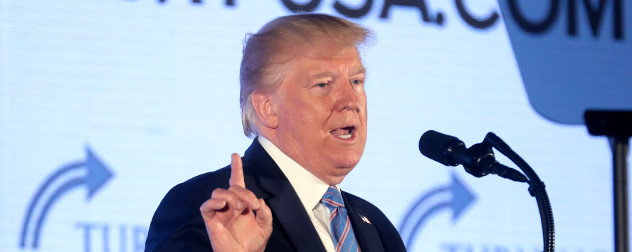

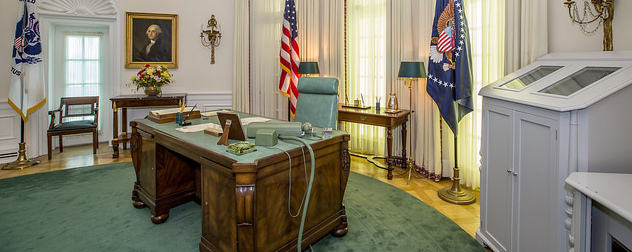

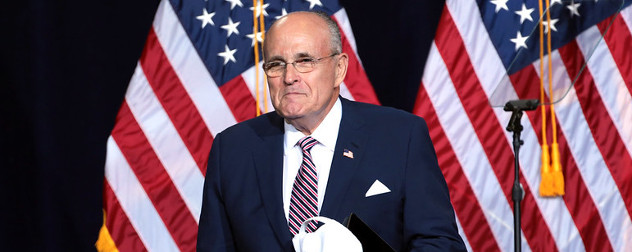
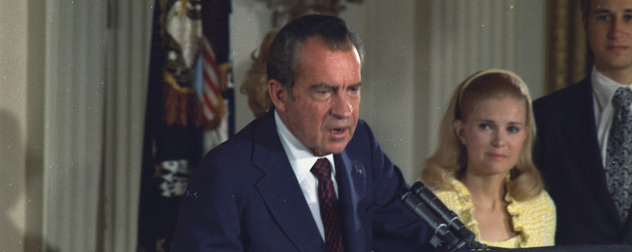



October 6, 2020 - 10:58 pm
In each of the historical examples you provide, the president of that time is the lone person in the executive branch experiencing the injury or health condition leading to his death or debility. In the current situation, there are numerous individuals in the executive branch experiencing the same health condition that our president is. More concerning than his health are the behaviors that opened the doors of the West Wing to a deadly virus. Regardless of how the markets react, this is a national security nightmare. One that our worst enemies could have only dreamed of.